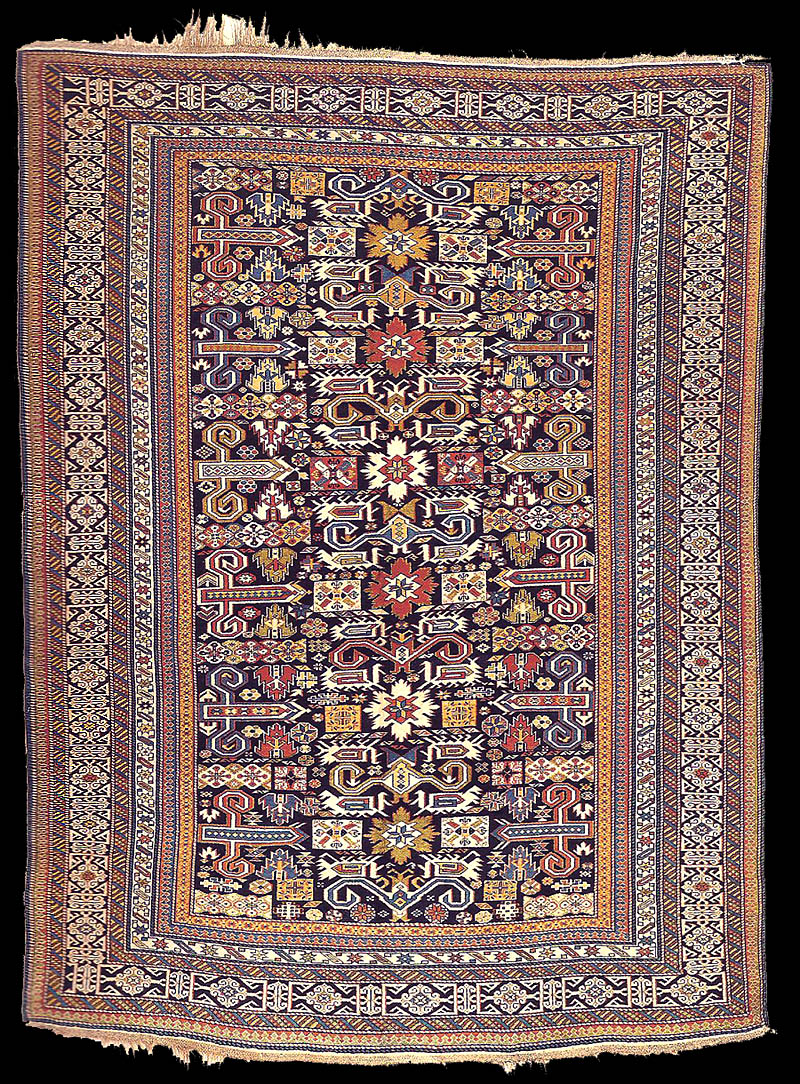|
232 199 X 150 cm
Around 1900
Most of the rugs of this group have a midnight-blue central field. In this
case, the ornamentation is so strong and dense that it almost represents
testimony to the principle of Horor Vacui. Most of the ornaments have
already been described in the context of previous pieces. What is new in
this rug are the palmette-like cypress trees which are inserted on the right
and left of the vertical axis over the buynuz (so-called fork meanders). In
between, we see merging lozenges of wonderful colours. In addition to that,
there are many white and dark yellow rectangles. The white ones show a
miniature version of the Gollu Chichi pattern (so-called Zeikhur pattern).
The reciprocal stripes of crenels and the star border on a light ground with
wide diagonal vine meanders are evidence of the geographic proximity between
Pirebadil and Chichi.
Warps: Wool + Cotton, Z3 S, 2 x white cotton +1 x dark brown wool;3 x dark
brown wool.
Wefts: cotton, Z2, white, two wefts, 1st lighter, 2nd waved.
Pile: wool,Z2, Pile Height:3mm.
Knots: Symmetrical 2, / 55 °, H 60xV45 = 2,700 Kn/dm2.
Handle: Velours, thin, ribbed.
Upper End: c. 2 cm cotton flat-woven end; 0.7cm layered white cotton simple
tapestry weave; 2.3 cm groups of warps cross-braided in three rows.
Selvedge: Thin, round and white cotton shirazi.
Literature: A similar piece in Doris Eder, loc. cit., p. 331, colour ill.
371.
published at Siyawouch
Azadi "Azerbaijani Caucasian
rugs" plate
no: 40
 |

